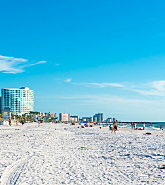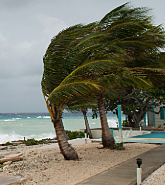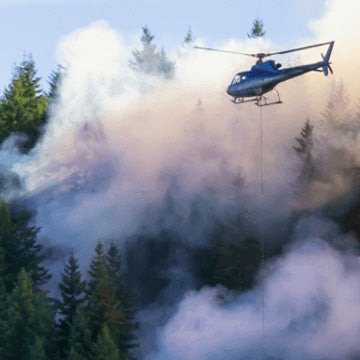Despite a relatively active start to the season that saw five named storms form between mid-June and mid-August—including Hurricane Beryl, the earliest Category 5 major hurricane in the basin on record—the North Atlantic has recently entered a mid-season slumber just as we reach its historically most active period.
The North Atlantic basin did not produce a named storm between August 13 and September 2 for the first time since 1968, 56 years ago. What has caused this lull in activity, and will the pre-season forecasts that called for an active season still hold?
An Unexpected Mid-Season Lull
Oceanic conditions in the North Atlantic couldn’t be more favorable for tropical cyclone formation, with sea surface temperatures across much of the Main Development Region (MDR) in the central equatorial North Atlantic somewhere between one and two degrees Celsius above average.
ENSO-neutral (El Niño-Southern Oscillation) conditions are present in the equatorial Pacific and are expected to continue for the next several months, with La Niña conditions—which typically lead to above-average North Atlantic hurricane activity—favored to emerge between September and November and persist until early next year.
Moreover, the West African monsoon has been very active thus far this year—which is also typically correlated with above-average activity—with much of western-central Africa receiving above-average rainfall. These factors were reasonably well-forecast ahead of the season and were expected to combine to result in above-average activity.
So what’s happened, and where have all the expected storms gone?
The recent quiet interlude stems from a complex interaction of several sub-seasonal atmospheric factors across the North Atlantic and West Africa that have produced conditions not as favorable for cyclogenesis as previously anticipated. These factors are difficult to forecast at seasonal timescales and include, but are not limited to:
- Anomalous low pressure over West Africa during June, July, and August that resulted in anomalous low-level southerly winds across the eastern subtropical North Atlantic, which advected dry air south into the far eastern MDR; dry air is a key inhibitor of cyclogenesis.
- In contrast, over West Africa, moist air has been anomalously advected north into the Sahel and Sahara regions, where some areas have reported over twice their average July and August rainfall, rather than out into the far eastern North Atlantic as part of African Easterly Waves (AEWs).
- In connection with the above, the Intertropical Convergence Zone (ITCZ) and the West African monsoon trough migrated much further north than usual, which resulted in weaker AEWs emerging over Senegal, Mauritania, and Western Sahara into the far eastern North Atlantic where sea surface temperatures near the coast have been much cooler than average. This has prevented the development and intensification of AEWs when they have emerged into the eastern North Atlantic.
- The atmosphere across the basin has been much more stable than expected—especially considering that the basin-wide above-average sea surface temperatures and high ocean heat content would typically result in greater atmospheric instability. Lapse rates between the upper and lower troposphere (change in temperature with height) have been some of the lowest on record across the basin in 2024, essentially stabilizing the atmosphere, suppressing deep convection, and hindering tropical cyclogenesis.
Colorado State University released a mid-season discussion that covers the aforementioned factors in more technical detail, which can be found on their website here.
While these factors coincided to shut down activity in late August and into the start of September and the immediate forecast calls for the lull to continue into early September, broader-scale conditions are likely to return to a more hurricane-conducive mode later this month—this includes the return to a phase of the Madden-Julian Oscillation (MJO) that typically promotes tropical activity in the North Atlantic.
So, what might be in store for the rest of the season?
Above Average Activity Still Expected
Despite the quiet interlude, most meteorological agencies still expect the 2024 hurricane season to conclude with above-average activity. On August 8, the U.S. National Oceanic and Atmospheric Administration (NOAA) announced a largely unchanged seasonal forecast compared to its initial release in late May.
Its updated forecast calls for 17 to 24 named storms, of which eight to 13 are expected to become hurricanes, and of those, four to seven are expected to become major hurricanes (Category 3 or stronger). The Accumulated Energy (ACE) index is forecast to be 165 to 245 percent of the median.
These numbers include those storms that have already formed, and the ACE already accumulated thus far.
NOAA’s August update is quite similar to its May outlook (17 to 25 named storms, eight to 13 hurricanes, four to seven major hurricanes, and an ACE of 150 to 245 percent), albeit a slight lowering of the upper bound of the number of named storms from 25 to 24 and a slight raising of the lower bound of its ACE forecast from 150 to 165 percent.
Furthermore, NOAA’s August update has a slight increase in the probability of above-normal activity (increased to 90 percent from 85 percent), no change in the odds for a near-normal season, and a decrease in the odds for a below-normal season (from five percent to near zero).
Similarly, updated forecasts from Colorado State University, Tropical Storm Risk, the U.K. Met Office, and the European Centre for Medium-Range Weather Forecasting (ECMWF) continue to call for an active hurricane season with only small changes in the ranges of tropical storms, hurricanes, major hurricanes, and ACE.
In its recent monthly update, Colorado State University also noted that it still expects an active late season in the Caribbean and western North Atlantic given the current sea surface temperatures and ENSO trending towards La Niña conditions.
Moving to the Midpoint
September 10 marks the climatological midpoint of the hurricane season, so there’s a long way to go before the hurricane season officially concludes on November 30 and the season’s activity can be fully evaluated.
Needless to say, the longer the quiet interlude goes on and the North Atlantic struggles to generate storms, the more likely the season’s final storm count will conclude below the pre-season forecasts. Watch this space for further updates from us on how the rest of the season unfolds over the coming months.
Regardless of how active or inactive the rest of the season may be, what’s key to hurricane risk for the industry is ultimately decided by the trajectory, path, and landfall of individual tropical cyclones.
These factors are dependent on both the broadscale and local synoptic factors at the time of formation and are not possible to skillfully forecast at monthly timelines.
It’s important to monitor how the next few months unfold, as regardless of overall activity and storm count, it can only take one landfalling event to make a season costly or memorable. Therefore, it is key to ensure processes are in place ready to respond to events that might unfold.
Moody’s RMS Event Response Stands Ready to Respond
Regardless of what happens through the rest of the year, with over 18 U.S. landfalling hurricanes since 2017, the industry is no stranger to hurricane risk and the increasing complexity of event losses. But every event serves as a unique reminder of the complexity and multifaceted nature of hurricane risks facing the insurance industry.
Earlier this season, Hurricane Beryl was an impactful event across multiple regions—it was the strongest hurricane on record to impact the southernmost Caribbean Windward Islands and caused some of the strongest observed winds in recent history over the densely populated Houston metro area.
Beryl also served as a reminder of factors exacerbating loss, as it produced infrastructure, treefall, tornado-related damages, and significant power outages—the impact of power outages was exacerbated as Beryl made landfall amid a major heatwave across the Southern U.S. that resulted in a high number of fatalities.
Hurricane Debby also highlighted the damage potential damage from storm surge and precipitation-induced flooding, and the need to model those sources of loss effectively when quantifying hurricane risk.
Each event serves as a reminder of the need for real-time monitoring and tools to capture the event as it unfolds. From exposure analytics to managing financial implications, Moody’s RMS Event Response provides support for every time-critical decision during a real-time event.
Frequently released detailed accumulation layers and stochastic event selections both pre- and immediately post-landfall enable exposure and portfolio analysis to inform decisions and prepare for potential losses as the event unfolds.
For instance, throughout the lifecycle of Beryl, Moody’s RMS Event Response released over 30 exposure analytics updates on ExposureIQ and over ten event updates accompanied by stochastic event selections.
Moody’s RMS industry loss estimates and associated probabilistic loss tools, which include bespoke event hazard reconstructions, enable timely and thorough analysis of total event losses.
As total event losses are becoming increasingly complex, with factors such as population increases in coastal areas, social inflation, construction inflation, and regulatory mandates influencing the overall event losses, Moody’s RMS Event Response remains committed to supporting our clients through what the rest of the season might hold and ensuring a timely and comprehensive view of the anticipated industry event loss.
The Moody’s RMS Event Response team ensures clients are well informed of global tropical cyclone activity with regular updates on the Support Center. Follow Moody’s RMS social media channels on X/Twitter and LinkedIn for updates.










